QuestionHello, I wasnt planning on getting fish this soon but... we were near petland yesterday so I suggeted we go in to take a look at the animals, when we got to teh fish department... everyfish in site was on sale! fan tail gold fish for only 1.47, assorted mollies for 1.47 everything was very inexpensive, I had a ten gallon tank homw witch I'd used for a lizard so I didn't have filter/pump/hodded cover/heater anything like that, I bought five fan tails and three different mollies, I can home scrambled to rinse the tank and fill it place the rocks/sea shells/deco in it, put the temp gage on and set the bags in to float for a bit, I had water condtioner as I had a pair of feeder goldfish and a betta already, I used a reptile heat lmap with a low waterage bulb for heating at this time and used a uvb light used for lizards to light the tank at this time, I put the water condtioner in and set them free, everything went well they are all still alive today and have eaten, I have placed my two feeder fish in with them as there home was tiny, I also placed a pinch of sea salt in the water as I was advised to do this by a friend who had gold/tropical fish together, I was wondering if they'd be ok in this tank set up for a few months a the fan tails are pretty tiny, I was wondering if I could add a small algie eater or two goast shrimps? I was thinknig of upgradeing to a 20 gallon or 29 gallon in the future would this be ok? should I feed both tropical and goldfish flakes?
AnswerHi;
You need to take all but one or two of the fish back to the store. It is way too many to start a tank with. In the next couple of days ammonia will rise to lethal levels and you will lose a few if not all of them. Your tank needs a filter too or they won't last more than a day or two. Are the fish at the top acting like they are eating but there is no food there? This means they are suffocating from toxins and lack of oxygen. You also need a heater for your tropical fish if you keep them. Goldfish should be in their own tank, get very big and are coldwater fish. Mollies and bettas are tropical. You really need to do some research on your fish and about the nitrogen cycle before going further.
Here is my article on starting a new tank;
**********
New Tank Syndrome or Break-in Period
So you have a new tank and you filled it up, put the filter together, mounted the heater into place and turned on the lights. You have all the plants and decorations where you want them....
You are ready for fish.
But, your filter is not ready for a full tank of fish yet.
The filter is running and moving the water and cleaning out crud, right? Of course!
But a very important part of your filter is the part you can't see. An aquarium filter removes the larger visible stuff, but it also must remove the dissolved fish waste that turns into ammonia in the water. To do this, special bacteria must grow in the filter system and on the particles of gravel in the bottom of your tank. This process occurs even on a limited scale in little fish bowls that have no filter in them.
This is "New-Tank Syndrome" or the "Break-in Period". The entire process takes 6 to 8 weeks to complete because these "nitrifying" bacteria grow quite slowly.
Start off with only one or two hardy fish (no more than 2 total inches of fish) for every ten gallons of water and don't add more until the 6 to 8 weeks has gone by. Hard to be patient, but it is worth it to keep your fish alive and healthy. As a matter of fact, the bacteria cannot develop without fish in the tank. You can let that tank sit forever without fish in it, but as soon as the first fish goes in the process begins. Avoid changing the filter pads during break-in. This removes the bacterial colonies that are essential to a balanced aquarium. You can rinse the filter pad out in a container of aquarium water. This will preserve most of the bacteria colonies while still allowing your filter to flow freely. Even using bacteria additives and water conditioners when you first set up the tank will not make a tank begin the cycle by itself. If there are no fish to provide food (fish waste) for the bacteria, the beneficial bacteria cultures will die and you will have to start the colonies all over again once fish are added to the tank. Once the tank has completed the initial cycle, you can change the filter pads every 4 weeks or so. But for now, just rinse them.
Feed your new fish VERY lightly. Any excess food will cause additional waste your system cannot afford to have right now. If you see food floating around or lying on the plants and gravel after five minutes, too much food is going into the tank. Cut back a little each time you feed until it is ALL gone 5 minutes after you feed them. Feed them once a day.
During this "break-in period" your tank will become cloudy and milky looking. You may have to tolerate this for the entire break-in period but it is only temporary. Changing 25% of the water three times a week until the break-in period is over helps a great deal. Changing water reduces the ammonia and nitrites that rise while the bacteria continues to multiply. If ammonia and/or nitrites become too high, your fish will become stressed and possibly die. Use a good water conditioner when you replace the water and make sure it is the right temperature to avoid shocking your fish.
When the break-in is over after 6 to 8 weeks and there are no nitrites or ammonia present in the water you can slowly add more fish. Add one or two every week until you reach the desired population. This allows the bacteria to adjust to the new population every time before adding more. Monitor the nitrites and ammonia to be sure they don't come up. If they do, make a 25% water change and check them again. Don't add the next fish until the levels are down again.
The safe maximum population for any size tank is one inch of adult fish for every gallon of water in the tank. Do some research to be sure of the fish you are interested in. Even though they are small when you buy them, you have to base your population calculations on full-sized adult fish. Many hobbyists have up to two inches per gallon but this can be risky. If a water quality issue arises or a disease occurs it will spread fast and furious in an over-populated tank. In any case, 25% water changes every week to two weeks are absolutely essential for the health of your fish.
Following these guidelines will help you get your new tank on the right track.
**********
At Your Service;
Chris Robbins
Come on over and join us on the freshwater fish forum at About.com to get even more information too;
http://freshaquarium.about.com/od/questionsanswers/a/naavigateforum.htm

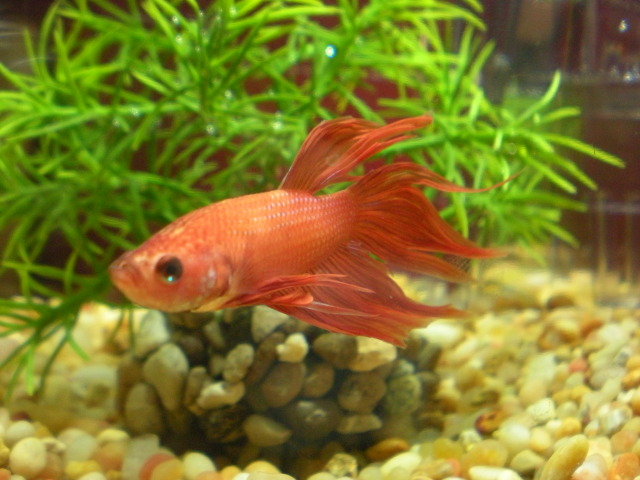 New Betta Antics
Question
Miso
Hello!
I just got my first betta after
New Betta Antics
Question
Miso
Hello!
I just got my first betta after
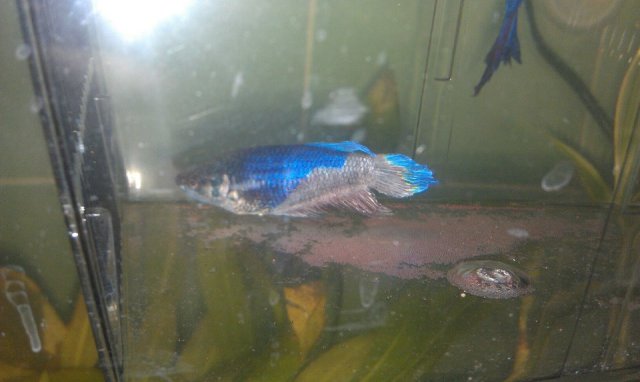 Identify disease?
Question
Betta Disease?
So, I wrote this whole t
Identify disease?
Question
Betta Disease?
So, I wrote this whole t
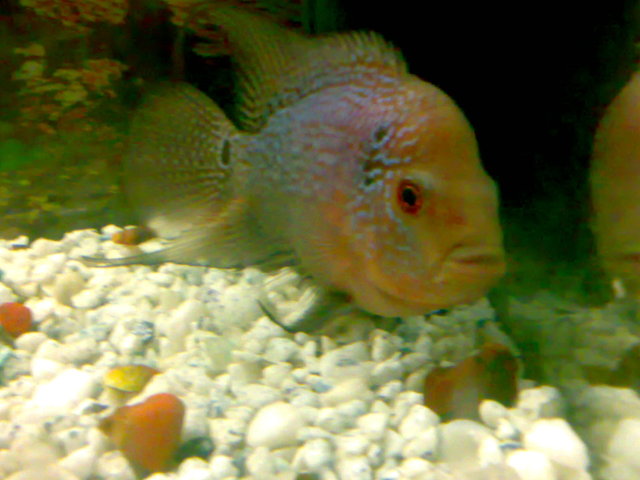 flower horn
QuestionQUESTION: how to know flowerhorn male or female
flower horn
QuestionQUESTION: how to know flowerhorn male or female
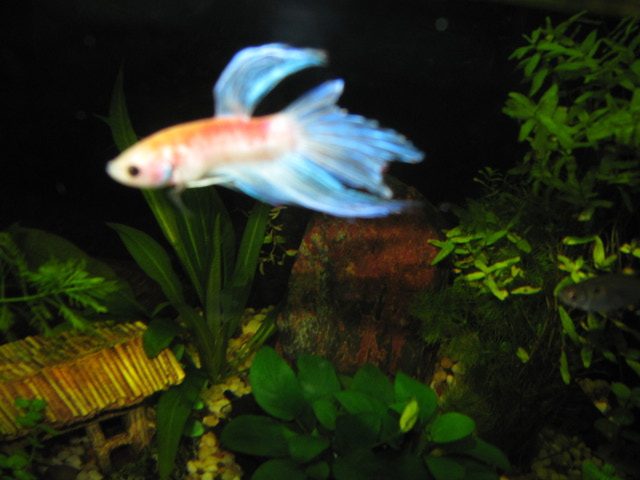 Fin Rot :-(
QuestionQUESTION: Hello Jaymie,
I am so concerned about
Fin Rot :-(
QuestionQUESTION: Hello Jaymie,
I am so concerned about
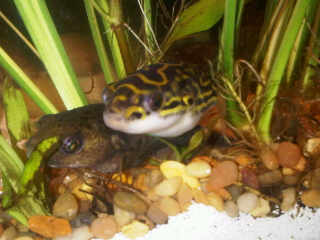 Puffers
Question
Hey, I bought red eyed puffer at the local pe
Puffers
Question
Hey, I bought red eyed puffer at the local pe